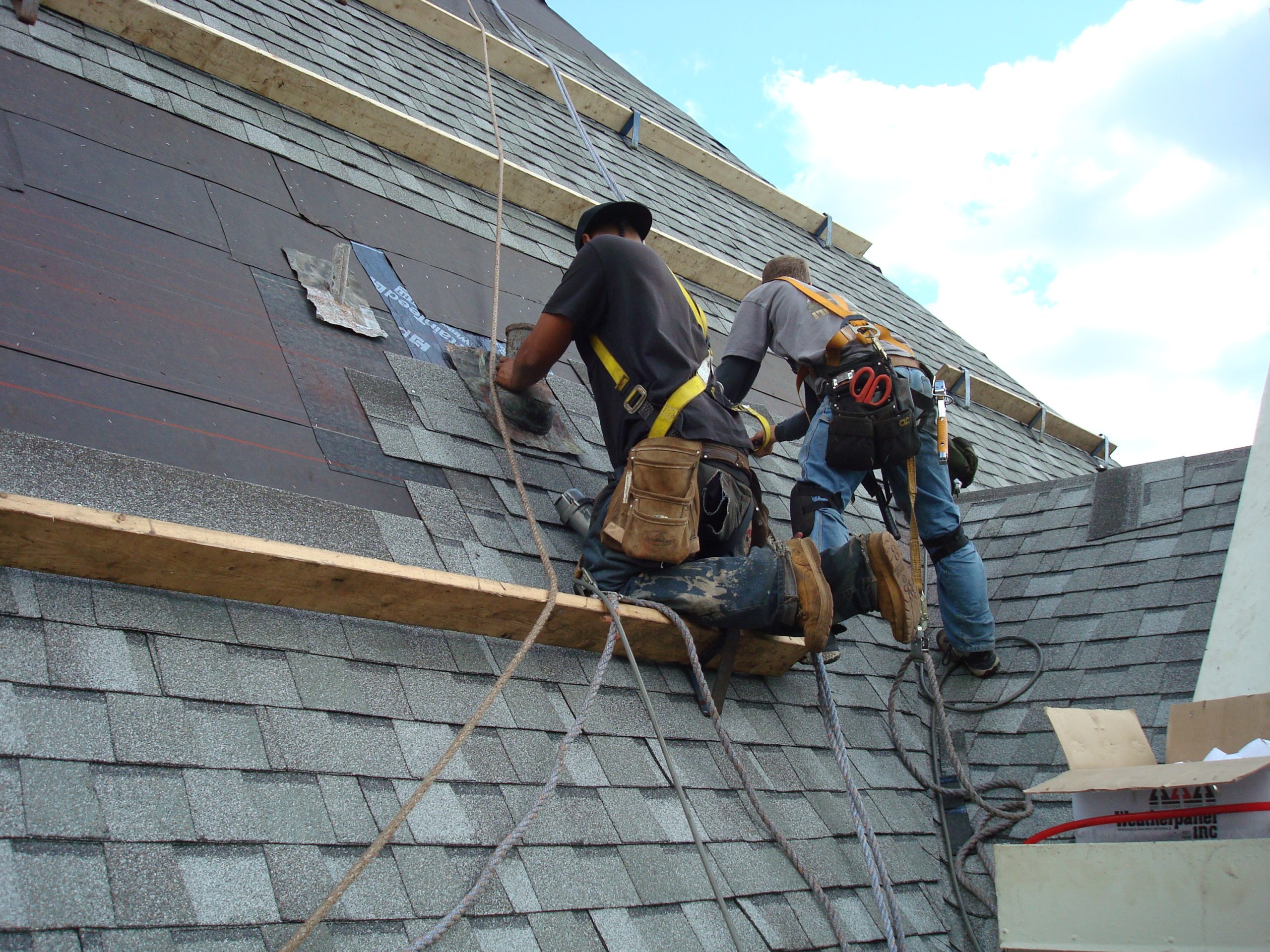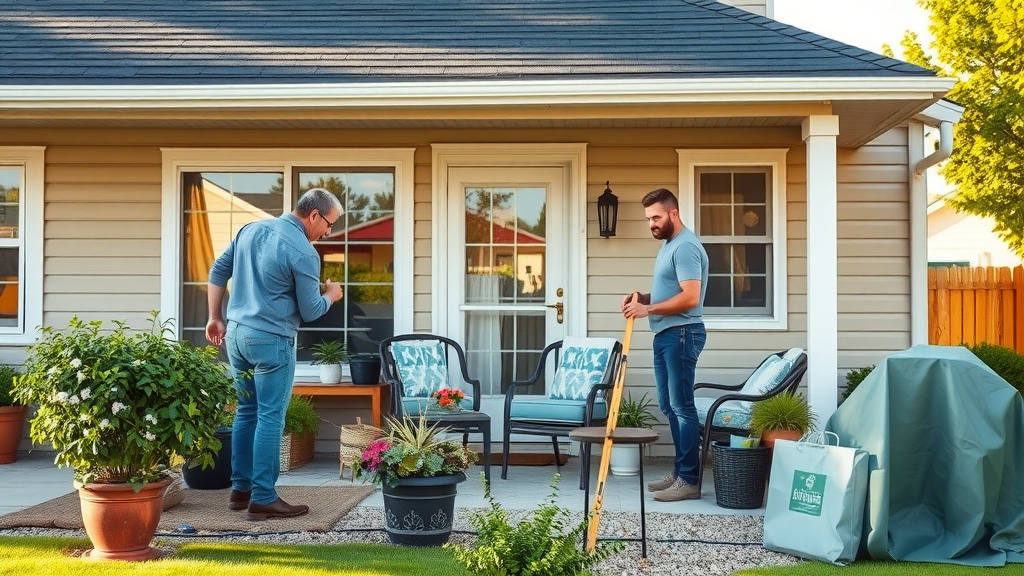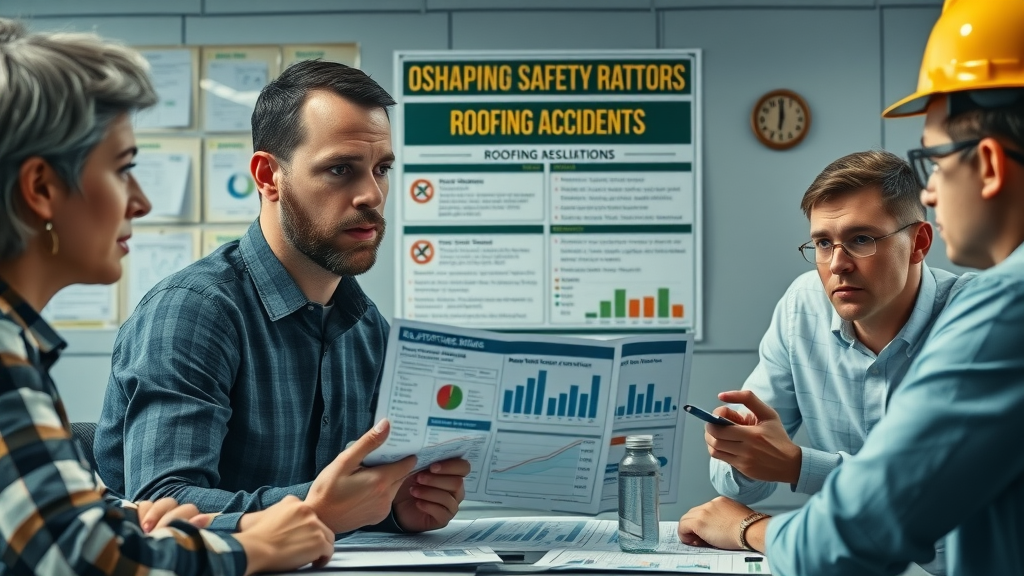Did you know that falls are the leading cause of death in roofing work, according to OSHA? This startling fact underscores the essential role of roof replacement communication and safety in protecting both workers and homeowners. Whether you’re a homeowner preparing for a roof replacement or a contractor managing a project, understanding how to communicate effectively and maintain strict safety standards is critical. This guide dives deep into key safety protocols, how to get your home ready, and expert tips to make roofing projects safe and smooth.
Startling Facts About Roof Replacement Communication and Safety
According to OSHA, falls are the leading cause of death in roofing work , emphasizing the critical need for fall protection systems.
Effective roof replacement communication and safety protocols reduce accidents and project delays significantly.
Many homeowners underestimate the importance of preparing their property and family for roofing projects.
This infographic provides a sobering look at the realities of roofing accidents, highlighting the vital importance of comprehensive safety and communication measures during roof replacements.
What You’ll Learn in This Guide
Key safety measures and fall protection systems essential for roofing projects.
How to prepare your home and family for a roof replacement.
Best practices for roof replacement communication and working with roofing contractors.
Common safety equipment and training required for roofing work.
Answers to frequently asked questions about roof replacement safety.
Overview of Roof Replacement Communication and Safety
Jeff Baxter, Sr, of Preferred Roofing Services, LLC, explains, “Clear communication and strict adherence to safety protocols are the backbone of any successful roof replacement project.”
Definition: Roof replacement communication and safety refers to the set of practices and protocols that ensure roofing work is conducted efficiently, with minimized risk to workers and homeowners alike.
Importance: Safety measures, especially fall protection systems, are critical in roofing projects to prevent injuries and fatalities.
Role of Roofing Contractors: Contractors must enforce safety protocols and maintain clear channels of communication with homeowners and workers.

Successful roof replacement projects hinge on teamwork and safety-first attitudes. A professional roofing team must constantly coordinate their efforts while maintaining focus on safety compliance and effective communication with clients.
For those dealing with unique roof types, such as low-slope or flat roofs, it’s important to recognize that safety protocols and communication strategies may differ. You can explore specific considerations for these projects in this detailed overview of roofing best practices for low-slope applications , which highlights tailored safety measures and project planning tips.
Key Safety Measures and Fall Protection Systems
Safety Nets and Fall Protection: Essential to prevent serious accidents, these systems catch or protect workers from dangerous falls during roofing.
Safety Equipment: Use of harnesses, helmets, and guardrails is mandatory to protect roofing workers on-site.
Training Requirements: Roofing contractors and workers undergo rigorous safety training to ensure understanding and compliance with safety standards.

These safety devices and protocols are fundamental in drastically reducing the risks associated with roofing work. Proper installation and consistent use are non-negotiable for any roofing project.
Preparing Your Home for a Roof Replacement
Clear the Driveway and Yard: Remove vehicles, outdoor furniture, and yard tools to create a safe workspace.
Protect Plants and Decorations: Use tarps to shield delicate plants and remove fragile garden ornaments to avoid damage.
Cover Attic Items: Prevent dust and debris damage by covering belongings stored in the attic.
Remove Fragile Interior Items: Vibrations during roofing can cause damage, so clear shelves and delicate decorations inside your home.

A well-prepared home environment not only protects your valuables but also supports a safer and more efficient roofing process. This preparation forms a critical aspect of roof replacement communication and safety .
Communication Tips with Neighbors and Contractors
Inform Neighbors: Notify neighbors ahead of the project to explain expected noise levels and timelines, fostering goodwill.
Access to Power Outlets: Ensure contractors have easy access to electricity for their tools to avoid delays.
Discuss Safety Protocols: Go over safety and work schedules with your roofing contractor for clarity and preparedness.

Clear communication with neighbors and contractors establishes mutual respect and reduces misunderstandings. Jeff Baxter, Sr, of Preferred Roofing Services, LLC, states, “A well-prepared homeowner and a safety-conscious roofing contractor make the difference between a smooth project and costly delays or accidents.”
Safety Considerations for Pets and Children During Roofing Projects
Create a Quiet, Safe Space: Designate an area away from the construction zone for pets and children to stay safe during noisy work.
Plan Outings: Whenever possible, arrange for pets and children to be away from home during the busiest work periods.
Monitor Pets: Keep a close eye on pets to prevent accidents around unfamiliar yard equipment or debris.

Protecting your family includes planning for the well-being of the youngest members and animals during roofing work. Noise and construction activities can cause stress or risk injuries if not properly managed.
Common Mistakes and Misconceptions in Roof Replacement Safety
Underestimating Fall Protection: Some assume small roofs are low-risk, but falls can happen anywhere.
Poor Communication: Neglecting to inform neighbors or family can cause frustration and safety risks.
Inadequate Home Preparation: Failing to clear or protect property can lead to damages or safety hazards.
Addressing these misconceptions upfront ensures a safer and more efficient roofing experience. Emphasizing proper communication and preparation is paramount.
Expert Insights and Best Practices for Roof Replacement Communication and Safety
Jeff Baxter, Sr, of Preferred Roofing Services, LLC, emphasizes, “A well-prepared homeowner and a safety-conscious roofing contractor make the difference between a smooth project and costly delays or accidents.”
Regular Safety Training: Contractors must engage in ongoing education to stay current with best safety practices.
Advanced Protection Systems: Use protection equipment adapted to weather and site specifics to reduce risks.
Clear Communication Channels: Maintain open, frequent communication between the roofing team and homeowner for smooth project flow.
Actionable Tips to Ensure a Safe and Smooth Roof Replacement
Use a Detailed Checklist: Follow thorough preparation steps to avoid overlooking safety or communication tasks.
Confirm Safety Equipment: Verify that your contractor follows safety protocols and uses appropriate fall protection gear.
Maintain Open Communication: Stay well-informed and responsive during the entire roofing process.
People Also Ask: Roof Replacement Communication and Safety FAQs
What are the OSHA requirements for roof safety?
OSHA mandates fall protection systems for roofing work at heights greater than 6 feet, including guardrails, safety nets, or personal fall arrest systems, to prevent worker injuries and fatalities.
Is it safe to stay home during roof replacement?
It can be safe to stay home if you prepare adequately and communicate with your contractor. However, noise, debris, and activity may cause discomfort or stress, especially for children and pets.
What safety considerations should be taken when working on roofs?
Key considerations include using fall protection, wearing proper personal protective equipment (PPE), ensuring proper ladder safety, and undergoing safety training before beginning work.
What to be aware of when replacing a roof?
Be aware of potential hazards such as falling debris, noise, and exposure to the elements. Proper home preparation, clear communication, and adherence to safety procedures are critical to avoid accidents and damage.
Home Preparation for Roof Replacement: Key Steps and Safety Benefits | ||
Preparation Step | Description | Safety Benefit |
|---|---|---|
Clear the Area | Remove vehicles and furniture from work zones | Prevents damage and allows safe movement |
Protect Valuables | Cover attic items and remove fragile objects | Reduces risk of damage from debris and vibrations |
Communicate with Neighbors | Inform about noise and schedule | Manages expectations and reduces complaints |
Access and Utilities | Ensure power outlet availability | Facilitates efficient and safe tool use |
Plan for Pets & Kids | Create safe spaces or plan outings | Minimizes stress and prevents accidents |
Key Takeaways on Roof Replacement Communication and Safety
Effective communication with contractors and neighbors is essential to managing safety and expectations.
Implementing safety measures and fall protection systems significantly reduces the risk of accidents.
Proper home preparation safeguards your belongings and home environment during roofing projects.
Consult with your roofing contractor to ensure compliance with all relevant safety protocols and OSHA requirements.
Conclusion: Ensuring a Safe and Successful Roof Replacement
Ensuring roof replacement communication and safety is a shared responsibility between homeowners and roofing professionals. Clear communication, careful preparation, and rigorous adherence to safety standards make all the difference in completing roof replacements smoothly and without injury. By following this comprehensive guide and leveraging expert advice like that from Jeff Baxter, Sr, of Preferred Roofing Services, LLC, homeowners can tackle their roofing projects with confidence and peace of mind.
If you’re interested in expanding your understanding of roofing beyond residential projects, consider exploring the broader landscape of commercial roofing solutions and strategies . Delving into commercial roofing introduces new safety challenges, advanced materials, and project management techniques that can elevate your knowledge and preparation for any roofing endeavor. Whether you’re a homeowner, property manager, or contractor, gaining insight into commercial roofing best practices can help you make more informed decisions and ensure the highest standards of safety and communication on every project. Take the next step and discover how comprehensive roofing expertise can benefit your property and peace of mind.
Effective communication and stringent safety measures are paramount during roof replacement projects to ensure the well-being of both workers and homeowners. To delve deeper into these aspects, consider exploring the following resources:
“Roofing Safety: Best Practices for Homeowners and Contractors”
This article outlines essential safety equipment, weather considerations, and ladder safety protocols crucial for roofing projects. It emphasizes the importance of personal protective equipment (PPE), proper ladder usage, and the necessity of conducting thorough roof inspections before commencing work. ( reitzelexteriors.com )
“Safety Procedures During Roof Maintenance, Repair, Replacement”
This resource provides a comprehensive overview of safety protocols, including fall prevention strategies and the importance of clear communication between facility managers and roofing contractors. It highlights the need for thorough risk assessments and adherence to OSHA regulations to mitigate potential hazards. ( facilityexecutive.com )
By consulting these resources, you can gain a more in-depth understanding of the critical safety practices and communication strategies necessary for a successful and secure roof replacement project.

